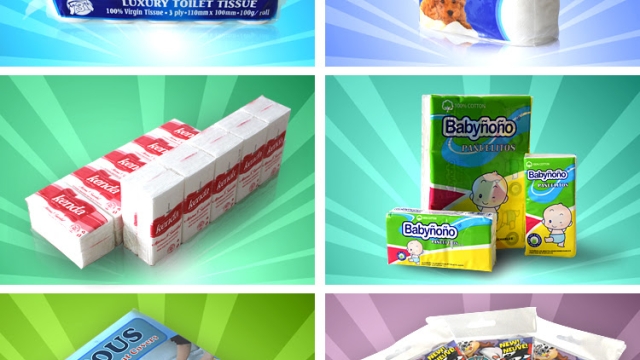
The Art of Crafting with Paper: Unveiling the Marvels of Paper Manufacturing
In the world of craftsmanship, there is a medium that holds immense versatility and charm – paper. From the pages of ancient scrolls to the materials we use daily, paper has been an integral part of human history and innovation. Its creation, known as paper manufacturing, is an intricate process that unveils the marvels behind this ubiquitous material. In this guide, we will delve into the fascinating world of paper manufacturing, exploring its rich history, the various techniques involved, and its impact on our lives.
The art of paper manufacturing dates back over two thousand years, originating in ancient China during the Han Dynasty. At that time, paper was made from mulberry bark, hemp, and old rags, which were soaked, beaten, and then left to dry in the sun. As time progressed, advancements in techniques and technology revolutionized the process, resulting in the production of paper on a larger scale.
Today, paper manufacturing involves a series of intricate steps that require both precision and expertise. It begins with the selection of the raw materials, commonly known as pulp. This can range from wood chips, recycled paper, or even agricultural byproducts. Next, the pulp undergoes a refining process, breaking down the fibers to create a fine mixture. This mixture is then diluted with water to form a slurry, which is carefully spread over a wire mesh conveyor belt.
As the water drains away, the fibers begin to intertwine and bond, forming a thin sheet of paper. This sheet is then pressed, ensuring the removal of excess water and enhancing the paper’s smoothness. Finally, the paper is dried and processed further, undergoing techniques such as calendering, coating, or embossing, depending on its intended use.
The impact of paper manufacturing extends far beyond the realm of communication and creativity. It plays a crucial role in various industries, including packaging, printing, and hygiene. One notable example is toilet paper manufacturing, a branch that focuses on producing the essential hygiene product we rely upon daily. This subset of paper manufacturing requires specialized techniques and considerations to ensure optimal quality and comfort.
As we embark on this journey through the art of paper manufacturing, we will explore its intricacies and unlock the secrets behind this timeless material. From its humble origins to its modern applications, understanding the process of paper manufacturing allows us to fully appreciate the marvels brought to life through the art of crafting with paper. So, join us as we dive deep into this world of innovation and creativity, where sheets of paper become vessels for knowledge, expression, and inspiration.
The Process of Paper Manufacturing
Paper manufacturing is a fascinating and intricate process that involves several stages to transform raw materials into the versatile and indispensable material we use in our daily lives. Let’s uncover the journey of paper as it emerges from fibers to become a widely utilized product.
First and foremost, the process begins with the preparation of the raw material, which typically consists of wood pulp, recycled paper, or a combination of both. These materials undergo rigorous cleaning and refining to remove impurities, such as dirt, ink, and other unwanted substances. This crucial step lays the foundation for producing high-quality paper.
Once the raw materials are cleaned, they are mixed with water to form a slurry-like substance called pulp. This pulp is then poured onto a wire mesh screen known as a paper machine. As the water drains through the screen, the fibers interlock and begin to bond together, forming a thin and wet sheet of paper. This sheet is then carefully pressed to remove excess water and achieve the desired thickness.
In the final stage of the manufacturing process, the damp paper is passed through heated rollers called dryer cans. These cans apply heat to evaporate the remaining moisture, and in turn, strengthen the paper further. After the drying process, the paper is wound into large rolls, ready to be transported to various industries for further processing or transformed into the final products we use every day.
Remembering the intricacies involved in paper manufacturing highlights the meticulous craftsmanship that goes into creating a simple yet essential item we often take for granted. From the raw materials to the drying process, each step is crucial in ensuring the production of high-quality paper that serves a multitude of purposes.
Stay tuned for the next sections of this article, where we will delve deeper into the specifics of the paper manufacturing process, including a comprehensive guide on how toilet paper is manufactured. Join us as we continue uncovering the marvels of paper manufacturing and the artistry behind its creation.
Understanding Toilet Paper Manufacturing Process
Toilet paper manufacturing involves a fascinating process that transforms simple sheets of paper into the essential bathroom product we use every day. From the creation of the paper to the final product, each step is carefully executed to ensure high-quality and comfortable toilet paper.
The first stage of the manufacturing process is pulp preparation. Wood chips, recycled paper, or a combination of both are broken down into small fibers through a process called pulping. These fibers are then mixed with water and various chemicals, such as bleach, to remove impurities and achieve the desired brightness and softness of the paper.
Next, the pulp mixture undergoes a series of steps to transform it into a continuous sheet of paper. This process is known as sheet formation and includes steps like draining, pressing, and drying. The pulpy mixture is spread onto a wire mesh that allows the water to drain out while retaining the fibers. The remaining wet paper sheet is then carefully pressed to remove excess water and improve its strength.
In the final stage, the dried paper sheet is converted into the familiar rolls of toilet paper we find in our bathrooms. This process involves embossing the paper to create the signature texture that provides comfort and absorbency. The rolls are perforated, allowing users to tear off individual sheets easily. Finally, the rolls are cut to the desired length and packaged, ready for distribution to stores and consumers.
Understanding the process of toilet paper manufacturing helps us recognize the intricate efforts that go into creating this everyday product. From pulp preparation to final packaging, each step adds value to the end product, ensuring that we have reliable and comfortable toilet paper readily available whenever we need it.
Innovations in Paper Manufacturing
In recent years, the world of paper manufacturing has witnessed remarkable innovations that have revolutionized the industry. These advancements have not only improved the quality and efficiency of paper production but have also paved the way for eco-friendly practices. Let us explore some of the groundbreaking innovations that have emerged in the field of paper manufacturing.
Sustainable Sourcing: One notable innovation in paper manufacturing is the shift towards sustainable sourcing of raw materials. Many manufacturers have recognized the importance of protecting our environment and have started utilizing renewable resources such as bamboo and recycled fibers to produce paper. By reducing reliance on traditional wood pulp, these sustainable practices help preserve forests while still meeting the growing demand for paper products.
Energy-Efficient Processes: Another exciting development in paper manufacturing is the implementation of energy-efficient processes. By optimizing production techniques, manufacturers have managed to reduce energy consumption during various stages of papermaking. Implementing cutting-edge technologies and equipment, such as high-efficiency pulping machines and advanced drying systems, significantly contribute to lowering the overall energy footprint of the industry.
Waste Reduction and Recycling: One of the most remarkable advancements in paper manufacturing is the emphasis on waste reduction and recycling. Manufacturers have implemented innovative waste management systems that enable the collection and reprocessing of production waste. This allows for the recovery and reuse of fibers, leading to a reduction in overall waste generation and minimizing the impact on the environment.
Toilet Paper Wholesale
With these remarkable innovations in paper manufacturing, the industry is not only becoming more sustainable but also ensuring the production of high-quality paper products. By embracing these advancements, manufacturers are playing a crucial role in creating a greener and more eco-friendly future for the world of paper.



